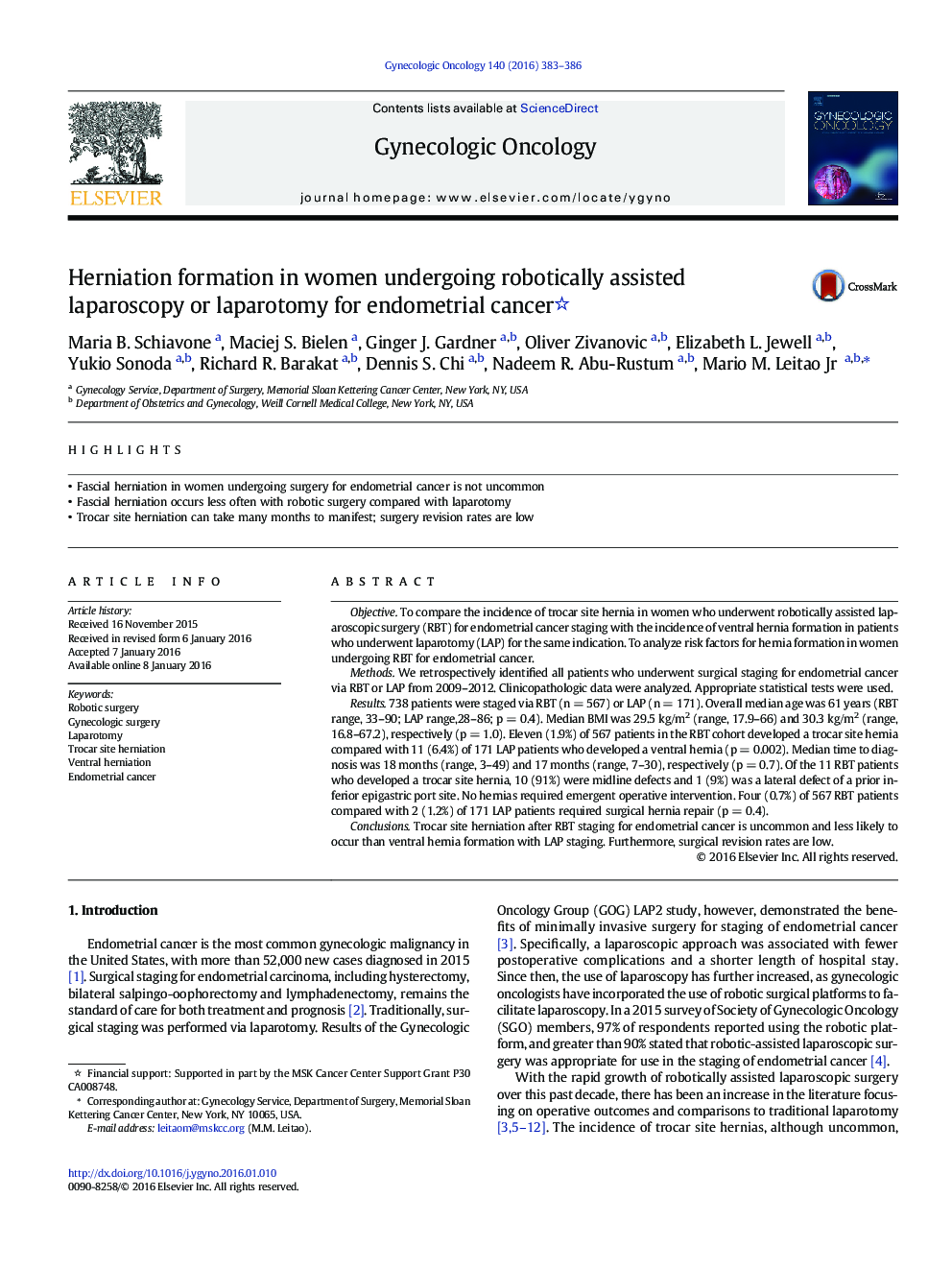| کد مقاله | کد نشریه | سال انتشار | مقاله انگلیسی | نسخه تمام متن |
|---|---|---|---|---|
| 3942965 | 1600074 | 2016 | 4 صفحه PDF | دانلود رایگان |
• Fascial herniation in women undergoing surgery for endometrial cancer is not uncommon
• Fascial herniation occurs less often with robotic surgery compared with laparotomy
• Trocar site herniation can take many months to manifest; surgery revision rates are low
ObjectiveTo compare the incidence of trocar site hernia in women who underwent robotically assisted laparoscopic surgery (RBT) for endometrial cancer staging with the incidence of ventral hernia formation in patients who underwent laparotomy (LAP) for the same indication. To analyze risk factors for hernia formation in women undergoing RBT for endometrial cancer.MethodsWe retrospectively identified all patients who underwent surgical staging for endometrial cancer via RBT or LAP from 2009–2012. Clinicopathologic data were analyzed. Appropriate statistical tests were used.Results738 patients were staged via RBT (n = 567) or LAP (n = 171). Overall median age was 61 years (RBT range, 33–90; LAP range,28–86; p = 0.4). Median BMI was 29.5 kg/m2 (range, 17.9–66) and 30.3 kg/m2 (range, 16.8–67.2), respectively (p = 1.0). Eleven (1.9%) of 567 patients in the RBT cohort developed a trocar site hernia compared with 11 (6.4%) of 171 LAP patients who developed a ventral hernia (p = 0.002). Median time to diagnosis was 18 months (range, 3–49) and 17 months (range, 7–30), respectively (p = 0.7). Of the 11 RBT patients who developed a trocar site hernia, 10 (91%) were midline defects and 1 (9%) was a lateral defect of a prior inferior epigastric port site. No hernias required emergent operative intervention. Four (0.7%) of 567 RBT patients compared with 2 (1.2%) of 171 LAP patients required surgical hernia repair (p = 0.4).ConclusionsTrocar site herniation after RBT staging for endometrial cancer is uncommon and less likely to occur than ventral hernia formation with LAP staging. Furthermore, surgical revision rates are low.
Journal: Gynecologic Oncology - Volume 140, Issue 3, March 2016, Pages 383–386
